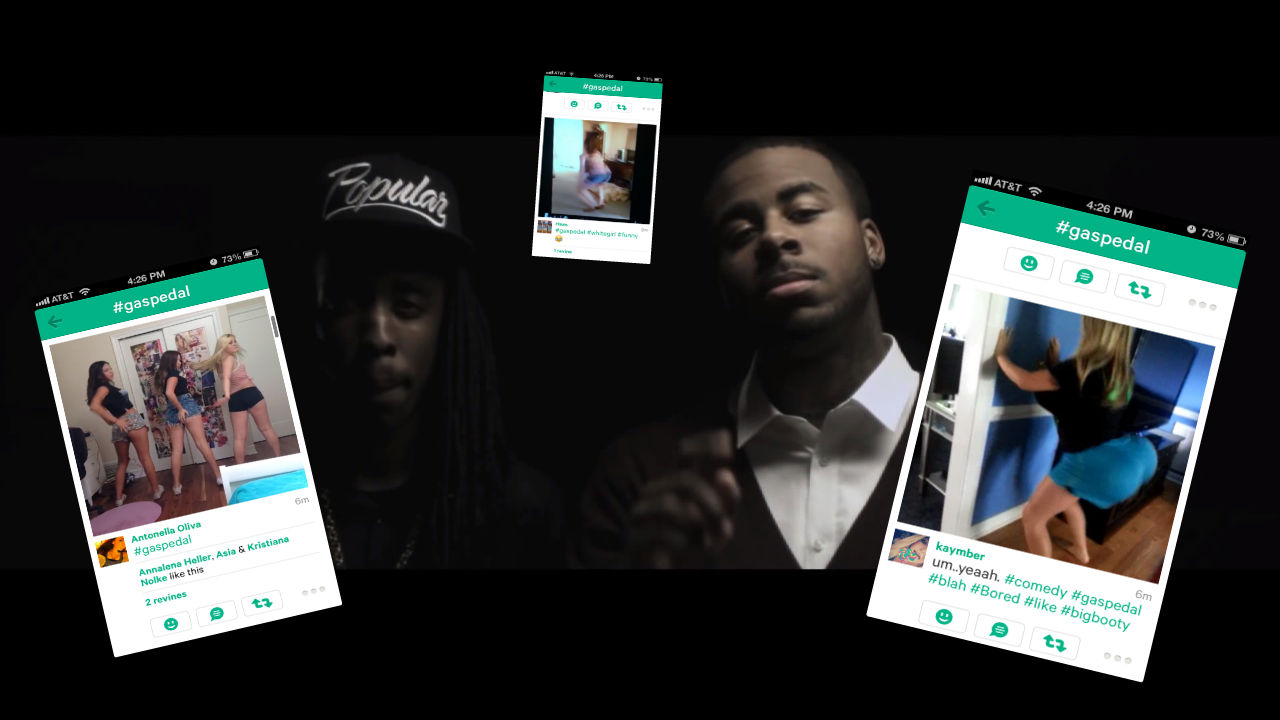Miley Cyrus’ “We Can’t Stop,” to many people’s chagrin, has become one of the biggest songs of the summer. The striking video, full of drug allusions, playful sexual images and questionable racial posing, immediately sparked controversy. It has over 90 million views on YouTube, and though there was strong backlash to the racial accessorizing of the black women in the video, the music fans of America have gotten the song to peak at #2 on the Billboard charts (currently #4 on iTunes). And despite all the vocal opposition, people across the country have begun making their own takes on the video on the app that no one knew they needed till they saw its six-second looped video clips: Vine.
Twerking, the hip- and butt-shaking dance favored by Cyrus and Vine users everywhere, has been around for nearly two decades, but has escaped its original bounce and Southern rap environment. Though the dancing has seen increased prominence in rap music the last couple of years, earlier this year Miley Cyrus uploaded a video to Facebook of herself twerking in a bunny suit to the J Dash song “Wop,” which raised awareness of twerking and of the song.
A quick search on Vine of #gaspedal, #dontdropthat and #wop reveals many clips of young, mostly white teens shaking their butts in unison to “Wop,” Sage the Gemini and Iamsu’s “Gas Pedal,” and Finnaticz’ “Don’t Drop That Thun Thun,” the songs mentioned in the hashtags. Many of the vines recall the twerking moment in Cyrus’ “We Can’t Stop” video, but without the black women to remind the viewer where the dance came from. Performers range from little kids just jumping about to college students of various genders looking like they’re trying out for a rap video.
The goofiness on display highlights how far the activity has been whitewashed. These songs had original dances, but that is slowly getting lost in these videos. But in a musical playing field that’s no longer very friendly to rap, the videos are also giving these songs, all of which are at least a year old, some newfound exposure.
As of the writing of this article, there are only five rap songs in the iTunes Top 50: “Holy Grail” by Jay Z and Justin Timberlake (number 4), “Same Love” and “Can’t Hold Us” by Macklemore and Ryan Lewis (numbers nine and 16, respectively) and below them, “Don’t Drop That Thun Thun” (29) and “Gas Pedal” (44), thanks largely to twerking vines. Though iTunes doesn’t release official digital sales figures, causal observance of the charts this summer has shown there haven’t been more than a handful of rap songs in the iTunes Top 50 at any one point. In 2007, when Soulja Boy’s “Crank Dat” went viral in a similar manner, black rap songs were reaching #1 on the Billboard Charts and cracking the Top 40 with ease.
Earlier this year at Spin, Jordan Sargent noticed how “Wop,” a five-year-old song, was shooting up the Billboard charts after the Cyrus video went up. He described it as rap having its “‘Harlem Shake’ moment”, where meme trumps actual music to rule the charts and white cultural appropriation is a leader of taste. But this white-first trend isn’t just viral. “Blurred Lines”, which has been #1 on Billboard all summer, was produced by a black man, Pharrell, but was the comeback single for Robin Thicke, a white soul singer, and it’s hard to imagine it having the same success with a black singer like Lloyd, or even Pharrell himself, as its face. “We Can’t Stop” is also from the mind of prominent black rap and R&B producer Mike Will Made It, which has been disappointingly overlooked discussing Miley’s appropriation of rap culture.”
The vines being created around these songs are raising their awareness and sending them up the iTunes charts, probably netting the artists a few extra dollars from digital sales, but they also detach the musicians even further from their music. Soulja Boy and many rappers in the mid-2000s were mocked by being called “ringtone rap” for their supposedly disposable songs, but that isn’t even the case here; these rappers and their songs are being bought and used to soundtrack six-second-or-less white appropriation. The Vine hashtags might reference the original music, but when a black person never appears on the screen, what is the value of appearing in the credits?


